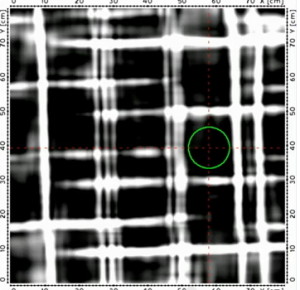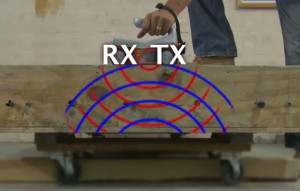How CSI Use Their Detection Machine
When there is a need to drill core or cut into concrete, it is critical to determine first what is in that concrete. This process is called concrete scanning. Equipment that allows conduit and rebar location detection will save time on the job, and, more importantly, can prevent serious injury from any live cables. Ground penetrating radar (GPR) plays an important role in mapping the presence of conduit and rebar in and below concrete.
Conduits And Rebar Location Detection
The information from our equipment provides a map of conduits, rebar and other objects that may be present in a concrete slab. Professional construction workers need this information before they core, saw or drill concrete, to avoid hits that are hazardous, even fatal, and are usually costly to repair. GPR equipment can find conduits in the concrete slab itself, below the slab, or within screed layers. The data also provide information about the natural features and conditions below ground.
Our experienced surveyors can assess site conditions and make the best use of equipment to obtain the best possible results. The use of specialised equipment allows conduit detection at depths from a few inches to more than a meter down. The proper use of radar based equipment requires technical training, skill and experience.
How Does GPR Locate Conduits and Rebar?
The process is quite straightforward:
• pulses of ultra-high frequency radio waves are transmitted into the ground through an antenna or transducer
• energy is reflected back from buried objects in the ground as well as from different earth materials
• reflected waves are captured by the antenna and sent to the equipment control unit
• a computer calculates the strength of the reflected radio wave signals, as well as the length of time it took for the waves to return to the machine; strong signal strengths means the machine has passed over objects with high density, such as underground utilities, rebar or other buried rubble
Professionals depend on this Radar information for detection of gas, water and sewer pipes, as well as communication conduits and electric wires.
Limitations Of Ground Penetrating Radar Technology
Like most specialised equipment, ground penetrating radar has some limitations. It can be affected by the depth, material and the size of the utility or object being investigated. Also, soil conditions, tree roots, and concentrations of metals in the earth can limit results. All these variables demand that our professionals should be engaged to do any scanning for rebar and conduit in concrete, because we have the training, equipment and technology to deal with these issues. Trying to do it yourself could lead to less than desirable results.
Leave It To The Experts
Give Us A Call Today
Steve Price: 0427 827 692

